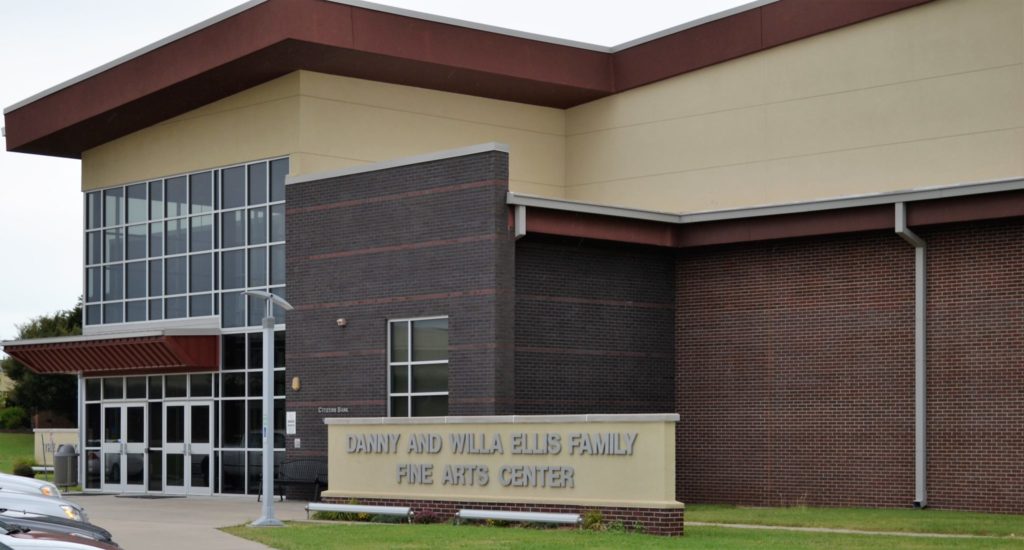PAWHUSKA, Okla.—When researching Osage history for Wahzhazhe: An Osage Ballet, co-creator Randy Tinker-Smith, founder of Osage Ballet, spoke with around 50 elders. Tinker-Smith is Osage, and she knows that some things are not meant to be shared onstage.
“While doing research for the ballet, I spoke with around 50 Osage elders,” she said. “I did not want to do one thing without permission. I met with some of them numerous times, and by the end of that year we had lost three of them. Now looking back, I am just so thankful that I had that time with them.”
With Martin Scorsese’s film Killers of the Flower Moon being recently filmed in the present-day Osage Nation, Osage history is on the minds of many people. Visitors to Fort Scott, KS have three opportunities to experience 400 years of the rich history of the Osage through artistic dance when Wahzhazhe: An Osage Ballet is presented at Ellis Family Fine Arts Center on the campus of Fort Scott Community College, July 21 and 22.

The production is the work of Osage Ballet, a nonprofit organization which seeks to preserve and share the history of the Osage people through dance.
The first half of the ballet depicts life in the Osages’ ancestral homelands, which encompassed much of the middle of the United States, including the entirety of what is now Missouri. One of the earliest diaries chronicling the Osage people describe them as the “happiest people in the world.” Family and ceremony were at the center of culture and moving with the seasons was a way of life. With the arrival of Europeans, many of the ceremonies and the complex Osage clan system were almost decimated by war and disease. Like many Indigenous people, the mighty Osage were forced west onto smaller and smaller pieces of land. Eventually, the Osage bought their own reservation in Indian Territory and settled there in what is now Osage County, Oklahoma.
Tinker-Smith said her own family’s history was on her mind as she researched.
“When our tribe left Kansas in 1871, there had been so much death because of smallpox and starvation and other diseases,” she said. “The buffalo had been slaughtered. Fences had been put up. Everything had changed drastically. Because of that, the elders put away our ceremonies because they did not have the animals, plants, and implements they needed to do them properly. We are a highly organized people: You have a purpose, you learn how to do it, and you pass it on, but that could not be done anymore. My great-grandfather was born at St. Paul Mission in Kansas. I read a diary that said 600 Osage people died in one week while he was living there. This history touches our family so deeply.”
The first act of the ballet chronicles what was lost, while the second act portrays how the Osage survived and continue to thrive despite so much trauma.
“When I started meeting with these elders, I wanted to have permission about what I could tell in the story,” she said. “As long as I am alive, for example, you will never see our sacred ceremonial ways on our stage, but what you will see are the things we still have: Fire, feathers, water. Songs. There is a lot that we can share, and it is exceptionally beautiful.”
The Osage Ballet, Wahzhazhe was created by a predominately Indigenous team with choreography by Jenna LaViolette (Osage) and original music by Osage composer Lou Brock. Dr. Joseph Rivers, chair of the film department at the University of Tulsa, composed original music and arranged the score. Osage artists Wendy Ponca, Alexander Ponca Stock, and the late Terry Wann, designed the costumes and backdrops. Shawnee Peoria artist Roman Jasinski, Jr. served as artistic adviser. (Jasinski is the son of Moscelyne Larkin, one of five Indigenous ballerinas from Oklahoma to gain international fame in the 20th century.) Professional dancers for the production are from ballet companies around the US. Joining the professional dancers are students of Dance Maker Academy in Pawhuska, Oklahoma, representing 19 Native nations.
For tickets and information on the July 21 and 22 performances in Fort Scott, KS visit their website, www.osageballet.com/events and watch for posts

Is there anyway to share just this article?…Thanks..
You can go to our Facebook page and share it from there.